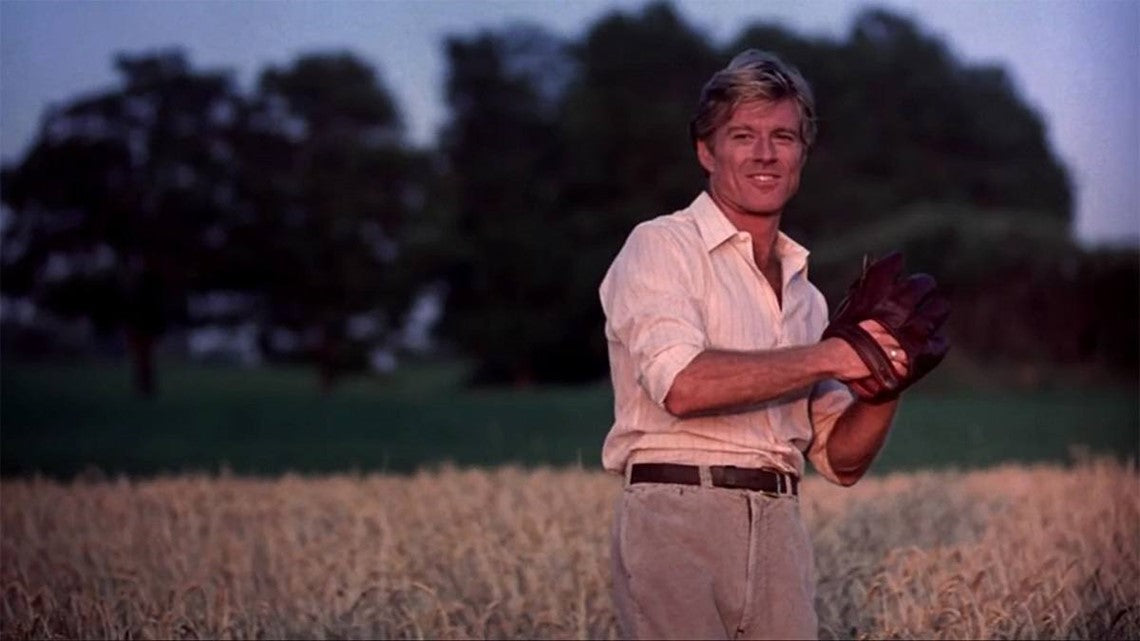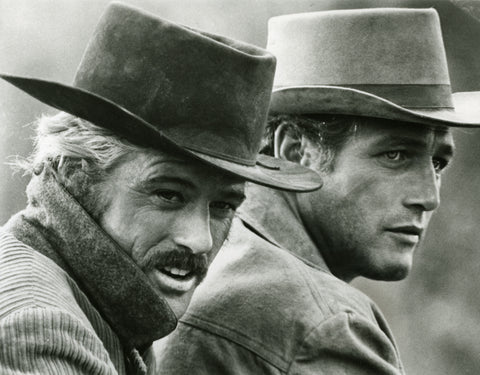
Robert Redford: A Living Legend
You may know him as the Sundance Kid, but there’s much more to Robert Redford’s prolific career than just his acting chops. A symbol of classic elegance, effortless style, and overall excellence, Redford brought depth to the film industry and opened the door for future filmmakers to hone their craft.

That wasn’t before his iconic friendship with the famed actor, Paul Newman, flourished both onscreen and off. The two were the duo the world didn’t know it needed and left an indelible mark on what it means to look and play the part of a true gentleman—especially in the beloved classic, Butch Cassidy and the Sundance Kid (1969).

Catapulted into the limelight after his onscreen friendship with Newman, Redford ascended into stardom with hits like Downhill Racer (1969), The Candidate (1972), and All the President’s Men (1976). True legends like Redford don’t stop when they taste a little success, and his entry into directing solidified his passion for the industry as he went on to craft an Oscar-winning flick like Ordinary People (1980).
While his storied acting and directing resume is nothing short of illustrious, Redford has actively paved a pathway for generations after him to fill (or attempt to fill) his shoes. Not only did he develop the Sundance Film Festival in Park City Utah which quickly grew to become fresh talent’s brightest showcase, but he’s also a devout conservationist.
Although style, charisma, and class are to be celebrated, Redford’s commitment to pioneering new pathways and leaving directions for those who follow him make him the epitome of a legend. Let’s take a deeper dive into what has shaped his values, career, and continued affinity for filmmaking over 60 years since his first onscreen appearance.
Read More: Paul Newman
Early Life

Like many influential figures, Redford was touched by adversity in his younger years. As a polio survivor, his perspective on life was broadened even as a child. In his recovery from the debilitating illness at just 11 years old in 1949, he was introduced to a new landscape that would call him back for years to come.
Redford’s mother introduced him to Yosemite National Park, where he was mesmerized by the stunning sequoias and majestic mountainscapes. As Redford put it, “Yosemite called me.” He took a job working at Camp Curry and Yosemite Valley Lodge where he immersed himself in the wonders of nature. In 2016, he got to circle back to his beloved roots and narrated the documentary National Parks Adventure.
Although Redford found solace in the park, he faced tragedy not long after discovering its magic. His mother, Martha Hart Redford, passed away suddenly from a bacterial infection called septicemia when he was 18 years old. It was a massive blow to lose the person who he knew to believe in him the most. Still, he soldiered on to earn a baseball scholarship to the University of Colorado, where he excelled in sports but was the self-proclaimed “campus drunk.”

Despite being a natural athlete, college life wasn’t for him, and he pivoted to explore arts in culture for several years in France and Italy. When he returned to Los Angeles, he met his first wife Lola Van Weganan, and the two were struck with the unimaginable not long after their union—losing their 5-month-old son to Sudden Infant Death Syndrome (SIDS).
The pair had four children together, whom he would say have been his greatest lifetime achievement.
Rise to Stardom
Before Redford graced the screen, he hit the stage. After enrolling in Brookyln’s Pratt Institute to study set design, his acting bug was awakened. A class at the American Academy of Dramatic Arts in Brooklyn, NY led to his Broadway debut in Tall Story (1959), and his momentum didn’t stop there.
His theater days rolled into small screen stints in the 1960s, including Alfred Hitchcock Presents, The Twilight Zone, and Route 66. With more roles under his belt, Redford earned accolades for his performance in Neil Simon’s Broadway hit Barefoot in the Park (1963).
With appearances in some lackluster films throughout the 60s, Redford stayed committed to the craft, until landing his game-changing role across Paul Newman in Butch Cassidy and the Sundance Kid (1969). The two reunited in The Sting, and Redford paired up with Barbara Streisand in The Way We Were, which became the two highest-grossing films of 1973.

Redford earned an Oscar nomination for his role in The Sting, which cemented him as a power player in Hollywood. Driving him further into the Academy’s graces were the top films All the President’s Men (1976) and The Natural (1984). Both films were decorated at the Oscars, and Redford quickly became one of Hollywood’s most ubiquitous stars.
Although Redford’s subsequent films in the 90s and 00s didn’t attain the same levels of notoriety, he persisted to act in well-known flicks like All Is Lost (2013), Captain America: The Winter Soldier (2014), and Our Souls at Night (2017) alongside Jane Fonda.
Directorial Debut
Redford has always looked at the bigger picture. From studying set designs to sporting tuxedos on Oscar red carpets, there was room in his relationship with the film industry for another undertaking: directing. His first film was an Oscar-winning family drama called Ordinary People (1980).
A River Runs Through It (1992) and Quiz Show (1994) were also well-received projects that supplemented Redford’s position as a director. More recent films like The Conspirator (2010) and The Company You Keep (2012) highlighted Redford’s directorial style of emotional detachment intended to emphasize the irony in the plots of his films.

As Redford’s multifaceted success grew, he began considering how to spread the wealth with people like him—filmmakers who deserve to tell stories to a wider audience. Around 1980, the Sundance Institute was born, as were a generation of independent films that finally had a platform.
From Sundance Kid to Sundance Founder, “I’ve always had this personal theory that at just the moment of the highest achievement, you should stop and go back to zero and not take anything for granted.” —Robert Redford, The Washington Post.
With hits like Star Wars ruling the movie roost, Redford opened the door for independent filmmakers with humanistic stories to tell. While special effects and evolving technology made for crowd-pleasing entertainment, Redford saw a need to preserve the human experience through filmmaking. By the 90s, the Sundance Film Festival rose to become one of the most celebrated international film festivals of all time.
Although Redford was actively passing the torch to new creatives, he was earning accolades for his work—sometimes from unexpected places. Thanks to his contributions to the film industry through Sundance, he received an honorary Academy Award in 2002. He was also awarded the Dorothy and Lillian Gish Prize in 2008 and in 2016, Redford’s interests outside of filmmaking were honored monumentally.
As the recipient of America’s highest civilian honor, Redford took home the Presidential Medal of Freedom, administered by Barack Obama, for his work as an actor, director, producer, and conservationist.
Seldom is someone’s work truly appreciated when they’re alive to witness it, but Robert Redford is a rare breed who made it happen on multiple levels. While his talent speaks for itself, he stretched beyond it to reach others and made their journeys through life just a little bit easier.

And to that, we say, hats off, Mr. Redford—you are truly a living legend. Join us in recognizing revolutionizing fields and persistence in pursuing our goals, no matter how big they are.
Be a TENLEGEND®.
